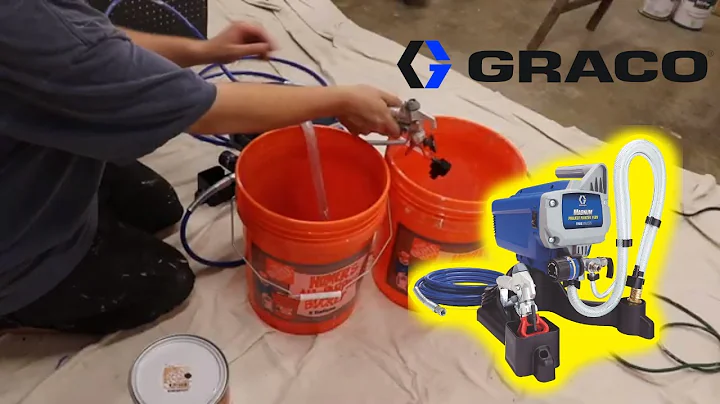Create Your Own DIY Horns for Costumes and Cosplays!
Table of Contents
- Introduction
- Materials Needed
- Creating the Base
- Adding Layers to the Base
- Sealing with Masking Tape
- Adding Extra Padding
- Paper-Mache with Glue
- Applying Tissue Paper
- Adding More Layers (Optional)
- Attaching to Headband
- Painting the Horns
- Final Touches
- Conclusion
🦄 How to Make DIY Horns for Costumes
Are you in need of some unique and eye-catching costume accessories? Look no further! In this article, we will guide you through the step-by-step process of creating DIY horns that are perfect for costumes or cosplays. These lightweight and easy-to-make horns will add an extra touch of fantasy to your outfit. So, grab your materials and let's get started!
1. Introduction
Cosplay enthusiasts and costume lovers often strive to add unique and attention-grabbing elements to their outfits. One popular choice is to incorporate horns, which can instantly transform a character into a fantastical creature. Whether you're dressing up as a mythical creature or a devilish character, these DIY horns will take your costume to the next level.
2. Materials Needed
To create your DIY horns, you'll need the following materials:
- Aluminum foil
- Masking tape
- Wood glue or white glue
- Tissue paper
- Headband
- Black felt
- Hot glue
- Acrylic paint (orange and black)
Gather these materials before getting started to ensure a smooth and hassle-free crafting experience.
3. Creating the Base
To begin, take a piece of aluminum foil and shape it into a cone. This will act as the base of your horn. Make sure to create a pointed tip and a wider base for stability. The aluminum foil provides a lightweight and flexible structure for your horns.
4. Adding Layers to the Base
Once you have the cone-shaped base, start adding thicker layers of aluminum foil to the base. Gradually widen the shape as needed, extending downwards and outwards. This will give your horns a more realistic and organic look. Focus on building up the base while maintaining the pointedness of the tip.
5. Sealing with Masking Tape
To ensure that the layers of aluminum foil stay in place, cover the entire horn with masking tape. This will seal everything in and provide a smooth surface to work with. Use smaller pieces of tape for easier maneuverability and to avoid kinks and crinkles.
6. Adding Extra Padding
At this stage, you may notice some concave areas that require extra padding. To fix this, take small sections of rolled-up aluminum foil and tape them down onto the horn. This additional padding will help create a more balanced and realistic shape.
7. Paper-Mache with Glue
Prepare a container with wood glue or white glue mixed with a little water. This mixture will be used for the paper-mache process. Begin by applying a layer of glue onto the horn, then cover it with tissue paper. Press the tissue paper gently onto the glue, ensuring it adheres to the surface. Repeat this step until you're satisfied with the thickness of the paper-mache layers.
8. Applying Tissue Paper
Continue adding layers of tissue paper, sealing each layer with more glue. The number of layers you add depends on your desired texture and smoothness. You can let each layer dry before adding more, or build them up while the glue is still wet for a more seamless effect. The more layers and glue you use, the smoother the final texture will be.
9. Adding More Layers (Optional)
If you prefer a fully smooth texture, you can add additional layers of tissue paper and glue. Allow each layer to dry before applying the next. This step may take longer, but it will result in a polished and professional-looking finish.
10. Attaching to Headband
To secure your horns, cut strips of black felt and wrap them around the areas where you want to attach the horns to the headband. Use hot glue to secure the felt strips in place. Cut off any excess felt for a clean finish. You can also wrap the felt all the way around the headband to better conceal it, depending on your desired look.
11. Painting the Horns
Once everything is dry and secure, it's time to paint your horns. Choose a color scheme that matches your character or costume. In this example, we used basic orange and black acrylic paint for a vibrant and contrasting look. Apply the orange paint first, covering the entire horn. Then, add black paint along the bottom to create depth and dimension. Embrace the texture of the horns by using a sponge to dab on the paint and create visual interest.
12. Final Touches
Repeat the painting process on both sides of the horns for a finished and cohesive look. Allow the paint to dry completely before handling the horns. Once dried, your DIY horns are ready to be showcased!
13. Conclusion
Congratulations on successfully creating your own DIY horns for costumes and cosplays! These lightweight and easy-to-make accessories will elevate your character and add an element of fantasy to your outfit. Experiment with different paint colors, textures, and shapes to suit your unique style. Now, go and rock your costume with confidence!







